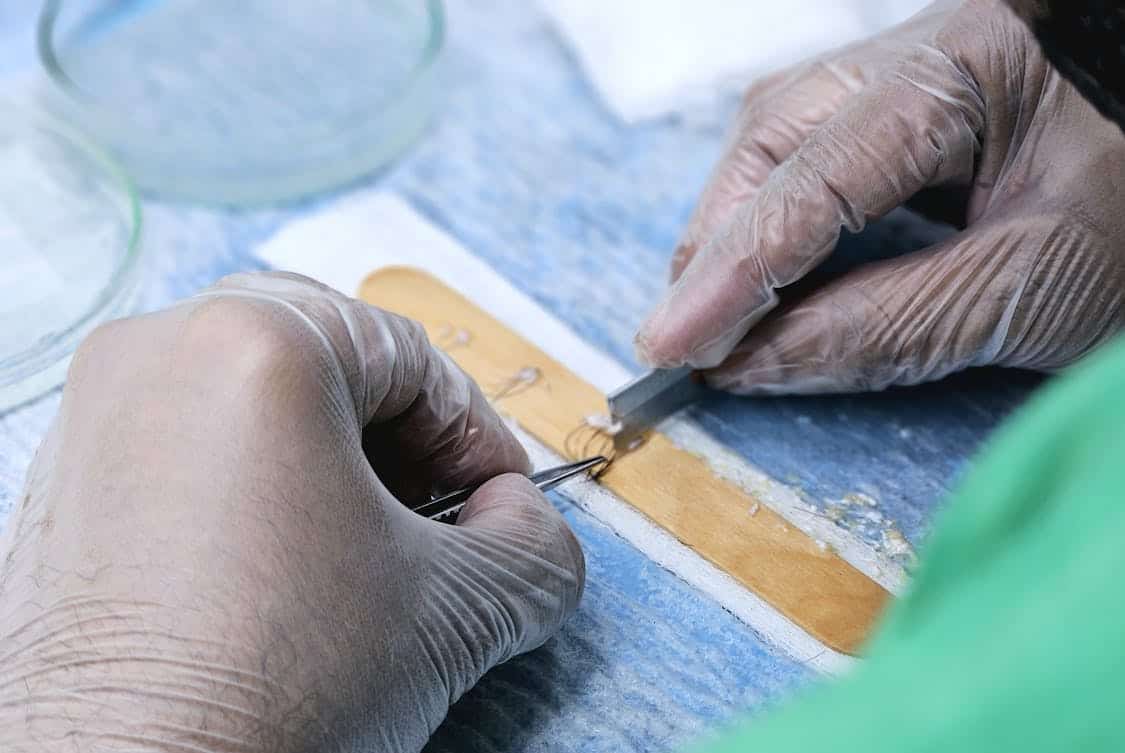When it comes to hair restoration, two methods often come into play: Follicular Unit Extraction (FUE) and Follicular Unit Transplantation (FUT).
Each technique has unique characteristics, benefits, and drawbacks that influence the decision-making process for potential candidates. Let’s explore the five primary differences between these two popular hair transplant options.
1. Extraction Technique
FUE involves extracting individual hair follicles directly from the scalp. This method uses a specialized tool that creates small circular incisions around each follicle, allowing for a minimally invasive extraction.
Because of this precision, FUE leaves tiny, dot-like scars that are often barely noticeable.
In contrast, FUT is a strip-based procedure where a strip of skin containing hair follicles is surgically removed from the donor area. The strip is then dissected into individual follicular units for transplantation.
This approach can result in a linear scar, which may be more visible depending on the length of hair and the healing process.
The choice between these extraction techniques often comes down to personal preference.
Some individuals prioritize the minimally invasive nature of FUE, while others may find the efficiency of FUT appealing. Each method has its own unique advantages worth considering.
2. Healing Time
Post-operative recovery varies significantly between FUE and FUT procedures. FUE generally allows for quicker healing.
Since it involves smaller incisions and minimal trauma to the scalp, patients usually experience less discomfort and a faster return to normal activities. Many individuals find that they can resume their daily routines within just a few days.
On the flip side, FUT may require a longer recovery period. The surgical strip removal can lead to more swelling and discomfort, extending the healing time.
Patients often need a week or more before feeling fully comfortable. Some may even require more downtime before engaging in physical activities that could strain the scalp.
This difference in healing time can be a deciding factor for many seeking a hair transplant. Those with busy lives might lean towards the quicker recovery offered by FUE, while others may be willing to trade a bit of time for potentially greater yield in hair density.
3. Hair Density and Graft Yield

When it comes to the number of grafts transplanted, FUT typically allows for a higher yield in a single session. Because it harvests a strip of skin, surgeons can extract a larger number of follicles in one go.
This can be particularly beneficial for individuals with significant hair loss who need more extensive coverage. In both FUE and FUT, each graft contains 1–4 hairs, strategically placed to ensure a natural-looking hairline and optimal coverage.
FUE, while effective, may yield fewer grafts in a single session. The process of extracting individual follicles can be time-consuming, which sometimes limits the total number obtainable.
While various sessions can be scheduled, some candidates may find that FUT offers a more aggressive approach to achieving their aesthetic goals.
Ultimately, deciding between the two methods may hinge on individual hair restoration needs. Those seeking maximum density in fewer sessions might favor FUT, while others might prioritize the advantages of FUE, even with its slightly lower yield.
4. Scarring and Aesthetic Considerations
Scarring outcomes differ significantly between FUE and FUT. FUE’s method of extraction results in tiny, dot-like scars that are often undetectable, even with short hairstyles.
This can be a significant advantage for individuals who prefer keeping their hair short or are concerned about visible scars after surgery.
On the other hand, FUT leaves a linear scar that can be more noticeable, especially if the hair is cut short. Depending on the individual’s healing process, this scar may fade over time but can still be visible when grooming.
For those worried about the aesthetic implications of scarring, FUE may present a more favorable option.
Understanding how scarring might affect your hairstyle choices is important. For instance, if you often wear your hair short, the scar from FUT could be a concern, while FUE’s minimal scarring allows for styling flexibility.
5. Cost and Time Commitment
Cost is another significant differentiator between FUE and FUT. Generally, FUE tends to be more expensive due to the labor-intensive nature of individually extracting follicles.
The specialized tools and extended time required for the procedure can lead to higher overall costs, which can be a critical factor for many seeking hair restoration.
On the flip side, FUT is usually more cost-effective, primarily because it allows for harvesting a greater number of grafts in a single session. This efficiency can make it a more appealing choice for those on a tighter budget or looking for a more economical solution for significant hair loss.
Time commitment also varies between the two methods. FUE may require multiple sessions to achieve desired results, while FUT often accomplishes more in a single visit.
Depending on your financial situation and time availability, these factors can influence the choice of procedure.
While exploring these differences, it’s essential to consult with a qualified hair restoration specialist. Every individual’s hair loss situation is unique, and professional guidance can help in making an informed decision.
Factors like hair type, density needs, and personal preferences will ultimately shape the best choice for successful hair restoration.

